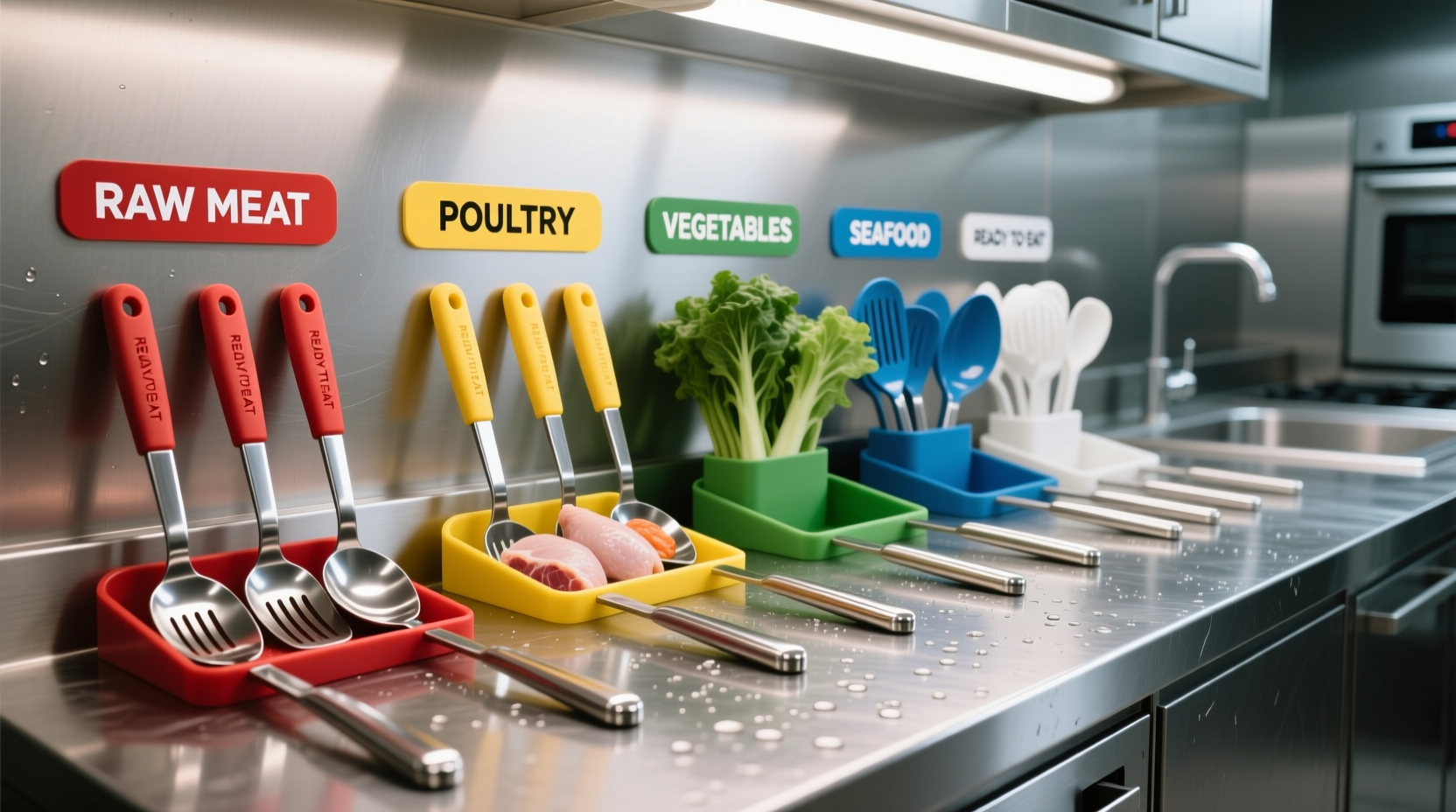When handling ready-to-eat (RTE) foods like salads, deli meats, fruits, and cooked dishes, you must use specific tools to prevent contamination. The FDA Food Code explicitly prohibits bare hand contact with RTE foods, requiring utensils, deli papers, or food-grade gloves instead. These precautions protect against pathogens like Salmonella and E. coli that cause 48 million annual foodborne illnesses in the U.S. alone.
Why Special Handling Matters for Ready-to-Eat Foods
Ready-to-eat foods require extra care because they won't undergo a "kill step" like cooking that destroys harmful bacteria. Unlike raw ingredients, these items enter your system exactly as served. The CDC identifies improper handling of RTE foods as a leading cause of foodborne outbreaks in restaurants and homes. Understanding the right tools isn't just convenient—it's a critical food safety practice.
Essential Tools for Safe RTE Food Handling
Food-Grade Gloves: Your First Defense
Nitrile gloves offer superior protection compared to latex or vinyl for food handling. They resist punctures better than latex and lack vinyl's chemical concerns. Always change gloves:
- Every 4 hours during continuous use
- Immediately after handling raw foods
- After touching face, hair, or non-food surfaces
- When visibly soiled or torn
Remember: Gloves don't replace handwashing. Always wash hands thoroughly before putting on gloves, as sweat and skin bacteria can contaminate food through microscopic glove imperfections.
Dedicated Utensils and Barriers
Use these specialized tools to create physical barriers between hands and food:
- Color-coded tongs and spatulas: Designate specific colors for RTE foods versus raw items
- Deli papers: Essential for handling sandwiches, cheeses, and baked goods
- Food-grade scoops: For salads, fruits, and portioning prepared items
- Stainless steel containers: Non-porous surfaces that resist bacterial growth

Cutting Boards: The Critical Color System
Implement a strict color-coding system for cutting boards:
| Color | Approved Use | Material Recommendation |
|---|---|---|
| Yellow | Raw poultry | Plastic (easier to sanitize) |
| Red | Raw meats | Plastic |
| Blue | Raw fish/seafood | Plastic |
| Green | Ready-to-eat produce | Wood or plastic |
| White | Ready-to-eat foods (bread, cheese) | Wood (retains less moisture) |
This standardized system, recommended by the National Sanitation Foundation, prevents cross-contamination between food categories. Never use the same cutting board for raw meats and ready-to-eat items without thorough sanitizing in between.
Avoiding Common Handling Mistakes
Even with proper tools, these frequent errors compromise food safety:
- "Just this once" bare hand contact: The FDA prohibits bare hand contact with RTE foods. Even brief handling transfers bacteria.
- Using the same gloves for multiple tasks: Change gloves when switching between food types or after non-food contact.
- Improper glove removal: Peel gloves from the wrist, turning them inside out to contain contaminants.
- Using household cleaning tools: Never use the same sponge or cloth for RTE food prep areas and general cleaning.
Professional-Grade Equipment for Food Service
Commercial kitchens implement additional safeguards:
- Separate prep areas: Dedicated stations exclusively for RTE food assembly
- Glove dispensers with touch-free operation: Reduces contamination during glove retrieval
- Time-temperature indicators: Labels that change color if food enters danger zone (40°F-140°F)
- Dedicated RTE food thermometers: Never use the same thermometer for raw and cooked items without sanitizing
According to the FDA Food Code Section 3-302.11, "Food employees shall not contact ready-to-eat food with bare hands." This regulation applies to all food service establishments and reflects evidence that hand contact transfers pathogens like Staphylococcus aureus at rates up to 1,000 times higher than utensil handling.
Creating a Safe Handling Protocol
Follow this sequence for maximum protection:
- Wash hands thoroughly with soap for 20 seconds
- Apply single-use nitrile gloves
- Sanitize all surfaces and utensils with food-grade sanitizer
- Use dedicated RTE food tools (color-coded)
- Discard gloves and rewash hands after handling raw items
- Sanitize work area between tasks
This protocol aligns with USDA Food Safety and Inspection Service guidelines that emphasize multiple barriers to contamination. Remember that no single tool provides complete protection—layered defenses create the safest environment for handling ready-to-eat foods.
Home Kitchen Adaptations
While home kitchens don't require commercial equipment, these adaptations maintain safety:
- Use separate cutting boards for produce versus meats
- Store RTE foods above raw items in refrigerators
- Designate specific utensils exclusively for salad and fruit preparation
- Use paper towels instead of shared kitchen towels near food prep areas
- Sanitize surfaces with vinegar solution or diluted bleach (1 tablespoon per gallon of water)
Implementing even basic precautions reduces cross-contamination risks by up to 80%, according to studies published in the Journal of Food Protection.
Frequently Asked Questions
Can I use regular household gloves for handling ready-to-eat foods?
No, regular cleaning gloves may contain chemicals unsafe for food contact. Only use food-grade nitrile gloves specifically manufactured for food handling, which meet FDA 21 CFR 177.2600 standards for food contact materials.
How often should I change gloves when preparing ready-to-eat foods?
Change gloves every 4 hours during continuous use, immediately after handling raw foods, after touching your face or hair, and whenever they become torn or contaminated. The FDA requires more frequent changes in commercial settings when handling multiple food types.
Are bare-hand restrictions only for restaurant workers?
No, while regulations specifically govern food service workers, the same safety principles apply at home. The CDC recommends avoiding bare hand contact with ready-to-eat foods in all settings to prevent transferring pathogens from your skin to food.
What's the proper way to sanitize utensils between uses with ready-to-eat foods?
Immerse utensils in a sanitizing solution of 1 tablespoon unscented chlorine bleach per gallon of cool water for at least 1 minute, then air dry. Commercial kitchens typically use NSF-approved quat-based sanitizers at proper concentrations verified with test strips.











 浙公网安备
33010002000092号
浙公网安备
33010002000092号 浙B2-20120091-4
浙B2-20120091-4